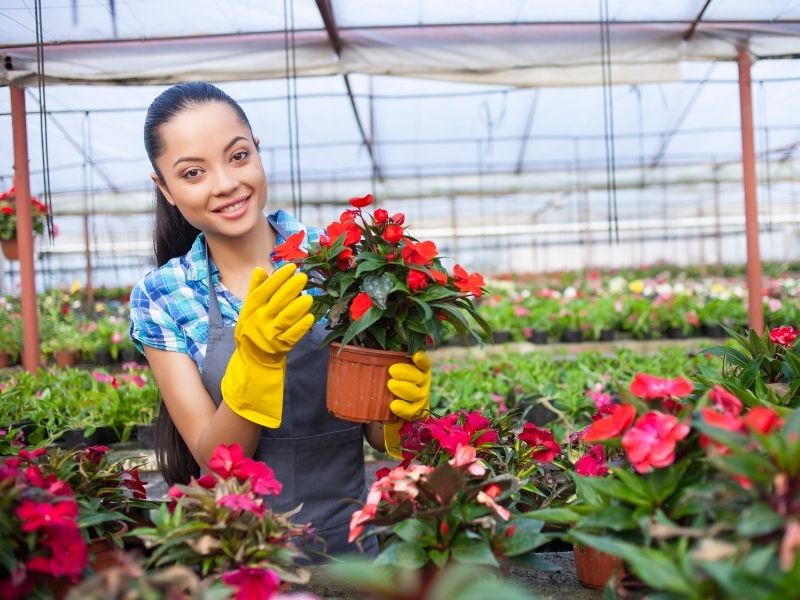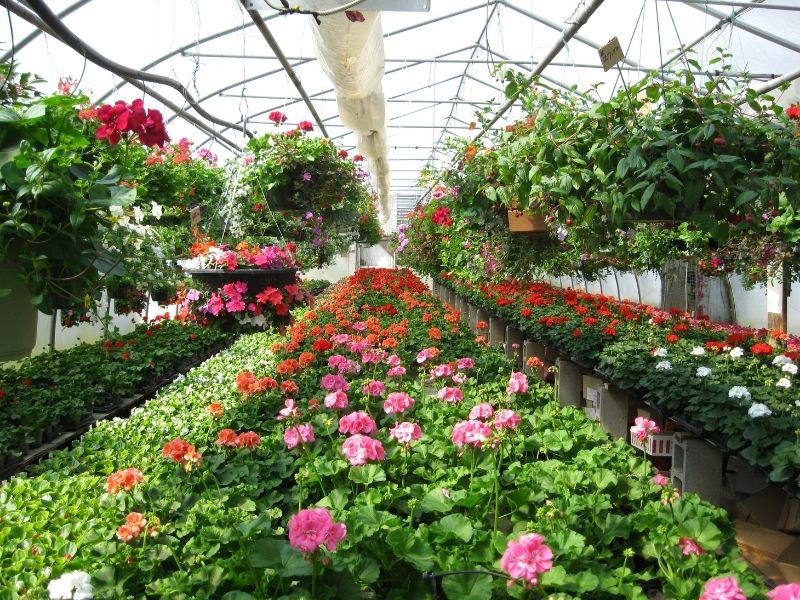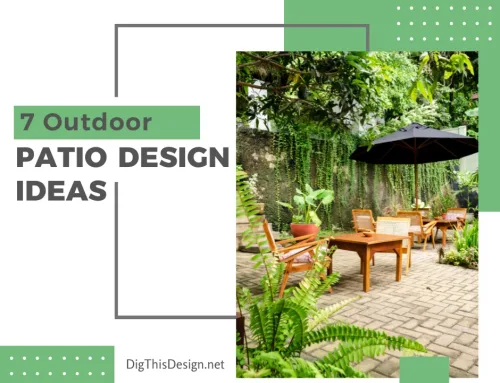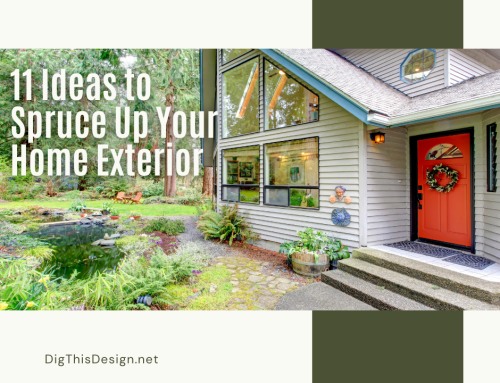A greenhouse is a great addition to your backyard to help you care for your plants while also being environment friendly. In the process, you save space, costs, and possibly even energy. Are you thinking of extending your growing season by constructing a year-round greenhouse? First, you must consider the best greenhouse design for you. In fact, there are many from which to select. So, today, we bring you an essential guide to the best greenhouse design.
Your Essential Guide to the Best Greenhouse Design

1. Determine The Purpose Of Your Greenhouse
Before you begin constructing your greenhouse, decide on what you’re building it for. Your greenhouse design will significantly depend on the accessories you want to add, the building materials, and what plants you’re looking to grow. Keep these considerations in mind when you start designing your greenhouse:
- Gardening Is A Year-Round Activity: You won’t need to worry about producing veggies in the winter, as the greenhouse traps heat so your plants thrive regardless of the outside temperature.
- The Ideal Habitat: The climate inside a greenhouse is conducive to the growth of vegetation ranging from herbs to flowers and crops. If you want a suitable space for your plants, I would go for a lean to greenhouse as they work the same as bigger greenhouses but is ideal for spaces in smaller properties.
- Saves Money: Each spring, many people invest a small amount of money on plants and lawn grass for their external gardens. In a greenhouse, you can grow as many seeds as you like, and you’ll almost certainly have more than enough to share with friends and family.
- Multi-functional Space: If you have a greenhouse, you won’t need a garden shed because you’ll have ample space to store tools and other equipment. You can also use it for other purposes such as a chicken coop. But make sure to create a dedicated enclosure so your chickens won’t end up consuming whatever you’re growing.
- Safeguard Your Plants: Greenhouse plants are protected from inclement weather and pests such as caterpillars, spider mites, locusts, and other insects. Experts say conservatory plants, on average, are healthier than those plants that aren’t.

2. Select The Type Of Your Greenhouse
While hobby greenhouses are available in several designs and sizes, the following three are the most popular among home gardeners:
- Cold Frame: Cold frames are the simplest and most fundamental greenhouses, consisting of small boxes with moveable lids that gardeners can use to grow their plants. Cold frames are frequently less expensive to build or purchase than other greenhouses since they normally won’t require a consistent heat source.
Home gardeners often use cold frames to protect their plants from the weather during the overwintering process, which is the practice of leaving cold, hardy plants in the ground over the winter months to continue growing.
- Attached Frame: The attached greenhouses are protected from the elements by a solid wall (often the home wall). They can range in size, from as tiny as a window box to as huge as a building’s facade. They’re available at a variety of pricing points. Still, because a solid wall protects them, the remaining three walls can frequently be constructed of less durable materials to save money.
- Freestanding: Because freestanding greenhouses are self-contained structures, gardeners can usually enter them. Freestanding greenhouses are either more expensive to purchase or more challenging to construct due to the requirement that they’re strong enough to stand alone.
3. Consider The Position Of The Sun
Owning a greenhouse has many benefits, and you need to make sure that you make the most of it. To begin, ensure that your greenhouse is positioned correctly. To ensure that your plants receive the necessary sunshine to thrive, you must be aware of the sun’s rising and setting locations.
While some greenhouses face straight south toward the sun, you should consider a slightly different orientation. Orienting your greenhouse southeast will provide your plants with more morning light and less afternoon light.
This orientation will prevent your greenhouse from overheating, which is detrimental to plants. As a result, it’s preferable to begin by determining where you want to put your greenhouse and its orientation.

2. Think About The Plants You Want To Grow
One of the many first things you’d have to think of when designing your greenhouse are the plants you cultivate. After all, they’ll be growing in the greenhouse. Keep these in mind while determining where to build a greenhouse:
- Which Crops Do You Wish To Cultivate? Are you in the market for bedding plants, perennials, or container plants? Understanding the soil type and growing method will aid how you’ll design your greenhouse.
- What Are Your Garden’s Objectives? How many plants do you wish to raise in a year? Plan both short- and long-term goals for your greenhouse to attain the best outcomes. This phase is simplified if you’re transferring existing plants into your backyard greenhouse. You’ll gain a better understanding of your plants and be able to select the optimal greenhouse design for them rapidly.
5. Build A Sturdy Greenhouse Base
Additionally, you should consider the greenhouse’s base design. Then, determine the greenhouse type, your local building codes, and personal preferences.
The greenhouse foundation material might be wood, concrete, galvanized steel, aluminum, or another material. Greenhouses attached to a house typically have different standards than self-contained greenhouses. Additionally, because local building codes differ, you must ascertain the precise requirements for your location.
The footing of a foundation, which is the point at where the greenhouse’s structure touches the soil, is critical. Typically, footers are constructed of cement and are governed by local codes and frost levels. Footers aren’t always required in hobby greenhouses.
6. Consider Its Resistance To The Elements
If you reside in a region prone to windstorms, anchoring your greenhouse to a robust base will assist in preventing it from flying away. Those fastened to heavy-duty footers are immobile, similar to those used in the construction of a house. You may break some glass, but you can also replace it.
Additionally, you can save money by making your greenhouse out of barn timbers, PVC pipes, old windows, or plastic sheeting as a do-it-yourself project. Additionally, there is a variety of free greenhouse design blueprints available online. Also, keep in mind that bringing it all together will require tremendous knowledge and time.
Additionally, if the greenhouse frame isn’t robust enough to endure a storm, severe winds, or the weight of snow, your efforts are futile if the greenhouse collapses or blows away.
In conclusion.
Greenhouses provide a huge advantage because you can tailor them to meet your needs. Also, with these tips, you are quickly able to build an ideal atmosphere in which your plants thrive. Furthermore, be confident that a prudent investment in the appropriate greenhouse will result in future earnings and savings. If you have any questions or suggestions, we always love to hear from you in the comments below. Also below are links that will take you to more fantastic articles about ALL things DESIGN for your home or business.
Images Courtesy of Canva.
Other Posts You Might Enjoy:
Summer Style for Your Home; 3 Quick Tips
How to Start a Vegetable Garden Right at Home





